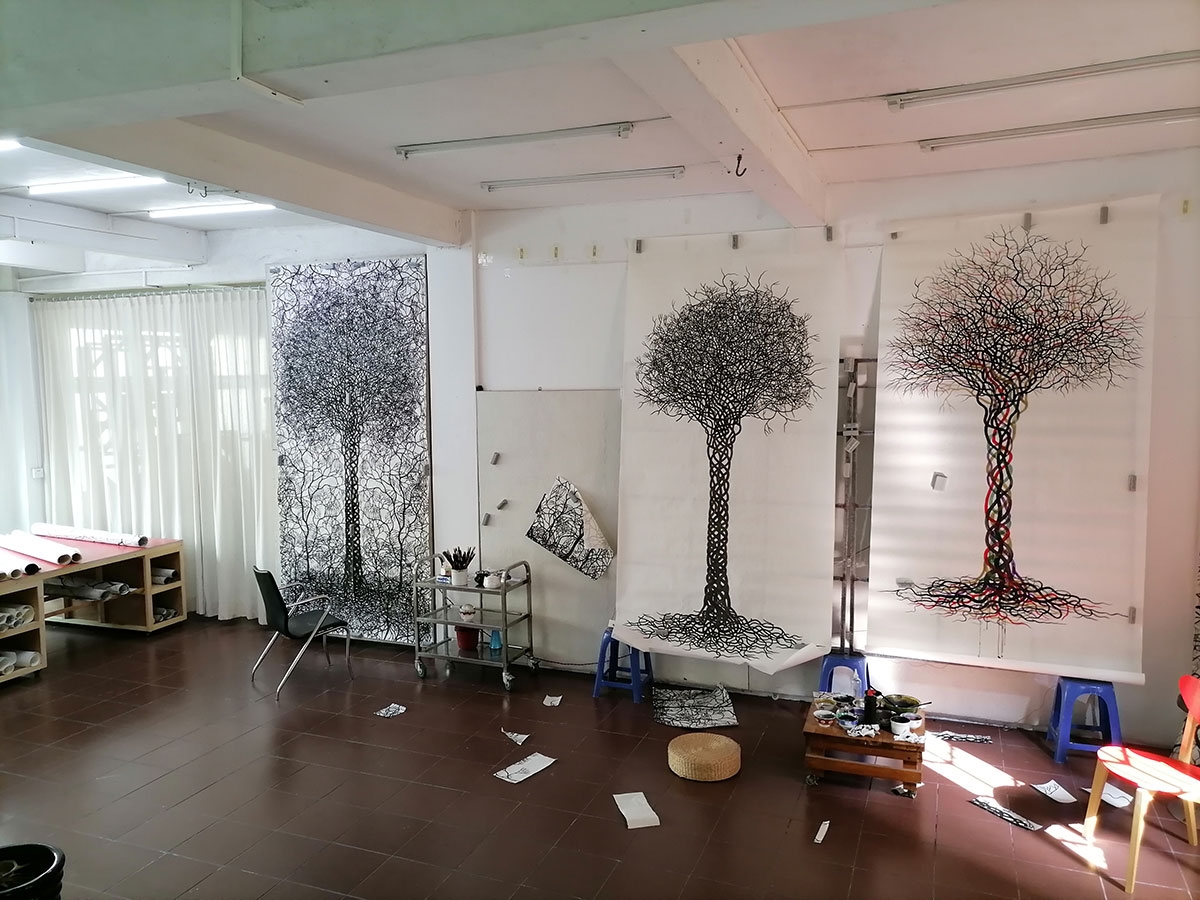Lao Tongli
- b. 1982 in Guangdong Province, China
- Working in Guangzhou, China
- Showing at Asia Society Museum
- On view October 27, 2020, through February 7, 2021
Lao Tongli’s contemporary practice can be viewed as transforming the centuries-old Chinese literati painting tradition while remaining open to global art currents, particularly seen in the artist’s sensitivity to the use of color as a way to mark space and movement. The artist received a BA in Chinese painting from the Guangzhou Academy of Fine Arts in 2006 and subsequently lived in Paris, France, and Heidelberg, Germany, from 2006 to 2008.
For the Triennial, the artist has painted a monumental ink-and-color-on-silk work titled The Desire of Libido No. 5. Referring to the monumental landscapes of the Northern Song (960–1127) period, this expansive composition evokes, at first glance, a forest canopy against a slate-gray sky. However, this panorama of trees takes the form of a complex interlocking web of blood vessels, rendered painstakingly in the gongbi style, which reached its peak during the Tang (618–906) and Song (960–1279) dynasties. Gongbi uses precise brushstrokes that portray details meticulously and without much variation. The artist first came upon the imagery of blood vessels as he endured the painful experience of observing his father’s death from heart disease. The association of blood vessels within the human body with an external landscape of trees is a poignant reminder of the deep and unbreakable bonds between humans and nature. In this way, Lao reconnects his painting, with its seemingly unorthodox subject matter, to a central idiom of literati landscapes. The gongbi technique used in this painting is similarly deployed by the Pakistani artist Hamra Abbas, whose work is also on view as part of the Triennial, in her intimately scaled paintings, demonstrating the mobility of artistic techniques and how they take on different meanings outside their place of origin.
Supported by INKstudio.
_0.jpg)


